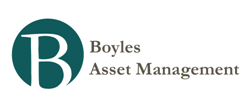Hussman Weekly Market Comment: The Right Kind of Hope
Happy New Year. We enter 2012 with a great deal of hope, but our hopes are not for more bailouts, or money printing, or any of the myriad policies that investors seem to hope will save bad investments and sustain elevated valuations. Instead, our hope is that in 2012, the market will finally "clear," in the sense that bad debt will be recognized as bad and restructured; that overleveraged financials will be taken into receivership instead of forcing austerity on every corner of the economy in order to make them flush again; that rates of return will rise enough to compensate and encourage saving - and high enough to encourage borrowers and other users of capital to allocate the funds productively. Of course, in order to restructure bad debt, someone has to accept a loss. In order for rates of return to rise, valuations must decline. In short, our hope is for events that will unchain the global economy from an irresponsible past and open the gates toward a prosperous future. Maybe that is too hopeful, but we are not entirely convinced that bailouts and "big bazookas" will be as easily procured in the year ahead as a confused public has allowed in recent years.
We begin 2012 with the S&P 500 priced at valuations from which we estimate 10-year total returns of just 4.9% annually. This figure would be less discouraging if it were not for the fact that valuations - properly normalized for the cyclicality of earnings - have been tightly related to subsequent returns as far back as one cares to look, and as recently as the past decade. It is true that rich valuations did not prevent the late 1990's bubble (corresponding to late 1980's 10-year total return projections), but the ultimate and predictable outcome of that bubble has been more than a decade of stagnant returns. Back in 2000, it seemed inconceivable that we could be projecting negative 10-year total returns, but that outcome was the natural result of the valuations we observed at the time. Weak returns over the coming decade (hopefully front loaded as a few years of negative returns, followed by normal or above-average returns in the out-years) are likely to be an equally natural result of present conditions.
With 10-year Treasury yields below 2%, 30-year yields below 3%, corporate bond yields below 4%, and S&P 500 projected 10-year total returns below 5%, we presently have one of the worst menus of prospective return that long-term investors have ever faced. The outcome of this situation will not be surprisingly pleasant for any sustained period of time, but promises to be difficult, volatile, and unrewarding. The proper response is to accept risk in proportion to the compensation available for taking that risk. Presently, that compensation is very thin. This will change, and much better opportunities to accept risk will emerge. The key is for investors to avoid the allure of excessive short-term speculation in a market that promises - bends to its knees, stares straight into investors' eyes, and promises - to treat them terribly over the long-term.
- Hussman Weekly Market Comment: The Siren's Song Of The Unfinished Half-cycle
Given the extent and maturity of the recent advance, it’s very odd that analysts are now beginning to toss around the idea that stocks have entered a secular bull market. These notions are based not on the level of valuation, nor on the duration of...
- Hussman Weekly Market Comment: Release The Kraken
Over the past 13 years, and including the recent market advance, the S&P 500 has underperformed even the minuscule return on risk-free Treasury bills, while experiencing two market plunges in excess of 50%. I am concerned that we are about to continue...
- Hussman Weekly Market Comment: Anatomy Of A Bubble
Presently, the Shiller P/E stands at 24. Be careful how you interpret the data in the table for Shiller P/E's above 24, since these levels were almost never observed in data prior to the late-1990's market bubble. You can see the odd effect of...
- Hussman Weekly Market Comment: Rich Valuations And Poor Market Returns
Last week, the S&P 500 Index ascended to a Shiller P/E in excess of 24 (this "cyclically-adjusted P/E" or CAPE represents the ratio of the S&P 500 to 10-year average earnings, adjusted for inflation). Prior to the mid-1990's market bubble,...
- Hussman Weekly Market Comment: Lessons From A Lost Decade
Over the past decade, stock market investors have experienced enormous volatility, including two separate market declines in excess of 50%. Despite periodic advances, at the end of it all, as a reward for their patience, investors have achieved an average...

